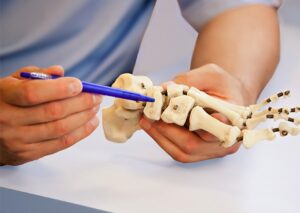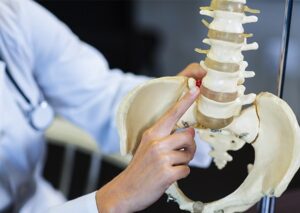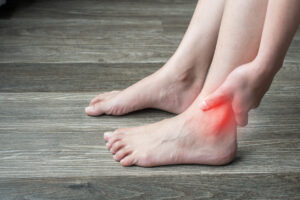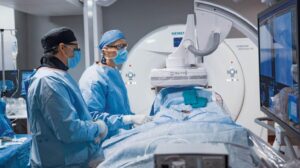RFN is a procedure performed on the nerves that surround the painful Sacroiliac and Facet joints as well as the Superior Cluneal Nerves. These areas are often the cause of low back and they can also cause pain to the legs. The aim is to interrupt the nerve supply decreasing the pain signals being sent to your brain.
Radiofrequency Neurotomy (RFN)
RFN is a procedure performed on the nerves that surround the painful Sacroiliac and Facet joints as well as the Superior Cluneal Nerves. These areas are often the cause of low back and they can also cause pain to the legs. The aim is to interrupt the nerve supply decreasing the pain signals being sent to your brain.
This procedure does not treat the underlying cause of the pain. Also, this method does not give permanent relief from pain as the nerves eventually recover and the pain can return. However, RFN may provide relief for greater than 9-12 months. If the initial treatment is successful, this procedure can be repeated multiple times. Usually prior to this treatment, you will need to have had a positive Medial Branch Block (MBB) of the Facet Joints and injection into the painful Sacroiliac Joint and Superior Cluneal Nerves areas to prove these are the causes of the pain before the RFN procedure is performed.
The procedure is performed in a similar way to a Medial Branch Block and other prior injections, but usually with sedation in theatre.
However, this procedure –
- Targets nerves close to the Sacroiliac joint, Superior Cluneal nerves and Medial Branches of the Facet Joints
- Takes longer to perform,
- Is more technically challenging, and
- Requires multiple levels of intervention.
Usually, prior to this treatment, you will need to have had a positive Medial Branch Block (MBB) of the Facet Joints and injection into the painful Sacroiliac Joint and Superior Cluneal Nerves areas to prove these are the causes of the pain before the RFN procedure is performed.
Indicators
- Low Back pain
- Pain that radiates down the lateral thighs and occasionally the lateral calves
- Low back pain that spreads to the buttocks.
When you're booking the procedure
On the day of booking your procedure, please advise staff if you are –
- Taking blood thinners (especially warfarin and clopidogrel)- T
- Diabetic
- Pregnant, or any chance of being pregnant
Allergic to:
- Shellfish
- Steroids
- Local anaesthetics
- Iodine
- Betadine
- Chlorhexidine
- Unwell or have an infection
DAY OF THE PROCEDURE
- DO NOT eat or drink (for 6 hours before your procedure),
- TAKE your usual medications with a small amount of water (apart from those mentioned above), and
- ARRANGE for someone to accompany you home.
DURING THE PROCEDURE
- You may experience some discomfort, however, this usually subsides and can be treated with ice packs and medication.
After you arrive, you will need to complete the necessary paperwork.
- You will change into a hospital gown,
- A small drip will be inserted into one of your veins,
- You may be offered mild/moderate sedation
- Your heart rate and blood pressure will be monitored throughout the procedure,
- You will lie face down on an x-ray table, then the skin over the area to be injected will be cleaned with an antiseptic solution,
- A sterile barrier will be created,
- A local anaesthetic will be injected to numb the area,
- An x-ray machine will be used to guide a small needle towards the nerve,
- You may experience some discomfort, however this usually subsides and can be treated with icepacks and medication.
AFTER THE PROCEDURE
- Monitoring will be provided in a recovery area until you are ready to go home. It usually takes between 60 – 120 minutes.
- Preferably, someone will take you home and stay with you for the next 24 hours.
- Pain may return when the anesthetic wears off. Some people experience an initial increase in pain and stiffness, which may continue for several days. When necessary you may apply an ice pack to the area for 20 minutes each time, for 1-2 days following the procedure.
- You may take simple painkillers, such as Paracetamol or opioids to ease any discomfort.
If you have received sedation during your procedure, the effects may last up to 24 hours. Due to the effects of sedation, you may not remember some of the information given to you during the process. For the next 24 hours, you SHOULD NOT –
- Drive a vehicle,
- Drink alcohol,
- Operate machinery,
- Make important decisions,
- Sign legal documents, or
- Travel unaccompanied
Unwell or have an infection
DAY OF THE PROCEDURE
- DO NOT eat or drink (for 6 hours before your procedure),
- TAKE your usual medications with a small amount of water (apart from those mentioned previously), and
- ARRANGE for someone to accompany you home.
DURING THE PROCEDURE
After arriving you will need to complete the necessary paperwork. Then –
- You will change into a hospital gown,
- A small drip will be inserted into one of your veins,
- You may be offered mild/moderate sedation
- Your heart rate and blood pressure will be monitored throughout the procedure,
- You will lie face down on an x-ray table, then the skin over the area to be injected will be cleaned with an antiseptic solution,
- A sterile barrier will be created,
- A local anaesthetic will be injected to numb the area,
- An x-ray machine will be used to guide a small needle towards the nerve,
- You may experience some discomfort, however this usually subsides and can be treated with icepacks and medication.
AFTER THE PROCEDURE
- You will be monitored in a recovery area until you are ready to go home. This usually takes between 60 – 120 minutes.
- Preferably, someone will take you home and stay with you for the next 24 hours.
- Pain may return when the anaesthetic wears off. Some people experience an initial increase in pain and stiffness, which may continue for several days. If necessary you may apply an ice pack to the area for 20 minutes at a time, for 1-2 days following the procedure.
- You may take simple painkillers such as Paracetamol and often opioids to ease any discomfort.
- Remove any dressing the day after your procedure.
- Avoid a rapid increase in your activities. Gradually increase your daily activities as tolerated. Discuss this with your doctor.
If you have received sedation during your procedure, the effects may last up to 24 hours. Due to the effects, you may not remember some of the information given to you during the procedure. For the next 24 hours, you SHOULD NOT –
- Drive a vehicle,
- Drink alcohol,
- Operate machinery,
- Make important decisions,
- Sign legal documents, or
- Travel unaccompanied.
COMPLICATIONS
Common Complications
- Continuing pain / no benefit
- Minor bleeding in the area injected
- Bruising in the area injected
- Temporary weakness or numbness from the local anaesthetic
- Brief increased pain that may fluctuate in intensity
More Serious Side Effects
The increased lifetime risk of cancer due to X-rays exposure
Very rare risk of surgery due to injuries from the procedure.
Please discuss any other questions you may have with your doctor regarding this procedure. If you agree to have the procedure done, you will need to sign a consent form.




















